Buy or gift a stand-alone digital subscription and get unlimited access to dozens of back issues for just £18.99 / $18.99 a year.
Please register at www.exacteditions.com/digital/cornucopia with your subscriber account number or contact subscriptions@cornucopia.net
Buy a digital subscription Go to the Digital EditionThey were stigmatised and despised, and eventually they were closed down. But what would Turkey be today without the Village Institutes, its bravest educational revolution, and the young people they empowered? Maureen Freely tells the moving story of the institutes, the subject of a new book and exhibition
When Atatürk first set out his plans for a modern, secular Turkey, his ambitions went well beyond its cosmopolitan cities. His eyes were on its villagers, the country’s “true owners”. Deprived of the “light of education”, they had been held back for centuries. They would become the nation’s greatest resource once the Republic had righted that wrong. But by 1935, this project had stalled. The medreses had been closed, replaced (at least on paper) with compulsory elementary education, but only 5,400 of Turkey’s 40,000 villages had primary schools. And even they had great difficulty retaining teachers, who could neither understand village life nor endure its hardships.
So it was with Atatürk’s blessing that a new Minister of Education, Saffet Arıkan, initiated a radical new project in 1935. The man he put in charge was İsmail Hakkı Tonguç, an educational visionary who was also the only man in his circle with a village background. Born in Bulgaria, educated first in Istanbul and then in Germany, he had worked in teacher training and crafts schools in several Anatolian cities, including Ankara. He had also travelled widely in Europe to acquaint himself with new thinking on education. The plan he put forward drew from ideas of leading European educational theorists such as Georg Kerschensteiner and Johann Pestalozzi, as well as the Americans John Dewey (who had visited Turkey in the 1920s) and Booker T Washington. But his vision was, at the same time, tailored for the Anatolia he already knew so well. What Tonguç wanted was not just the “mechanical” advancement of village life but the “meaningful and conscious resurgence of the village from within”, so as to put an end to its history of “ruthless” exploitation. Once villagers had access to the proper sort of education, they would no longer be condemned to slave away as beasts of burden: “Like any other citizen, they too will claim their rights.”
The schools he had in mind would inspire graduates to look beyond their own advancement to the general betterment of village life across the nation. Tonguç dreamed of a new order in which educated villagers would be able to participate in the administration of “all levels of the state, from the local to the National Assembly”. This would lead in turn to policies that at last reflected the realities of rural life. In the meantime, it was heroes that the Turkish village would need most, not great scholars or artists: “Draining the swamp, putting malarial patients on a quinine regimen, giving eye drops to those afflicted with trachoma, constructing school buildings, healing the wounds of the injured, delivering babies, mending ploughs, repairing bridges, sowing improved seeds, and planting saplings… these are the tasks that this army of heroic technicians – and not the scholars – will achieve.”
Having assembled a small team of young and like-minded idealists, Tonguç launched his first pilot teacher-training course in Çifteler, Eskişehir, in 1936. They went on to replicate the model in other parts of Anatolia. The graduates of these six- or seven-month courses were sent back to their villages, where, in addition to teaching children and adults how to read and write, they offered guidance in healthcare and agriculture.
In 1940 a new law backed by the Prime Minister, İsmet İnönü, and the new Minister of Education, Hasan-Ali Yücel, allowed Tonguç to expand his network of fully fledged Village Institutes, offering five-year courses for children (both male and female) from the villages in their area. By 1945, there were 21 institutes serving all the regions of the country. This form letter, written to prospective students by Hayri Çakaloz, the director of Ortaklar Village Institute, captures the spirit of the enterprise:
My dear son/daughter,
You have successfully passed the admission examination and so have qualified to become a student at our Institute. As I congratulate you for this honourable achievement, I am happy to inform you that our Institute family of more than 400 students awaits you with open arms. I kiss you on the eyes. After receiving this letter, please make the following preparations: Get a closely cropped haircut. Wash your hands, feet, and entire body as best you can. If your clothes are dirty, please have your mother wash and mend them.
These were kindly but deeply practical suggestions. Safa Güner, who served as director of İvriz and Göl Village Institutes, recalled that children newly admitted to his Institute often arrived in torn, patched clothes or rags that fell apart after the first day. More than a few came barefoot. Some had swollen bellies with overgrown spleens. Most had cavities. Almost none carried handkerchiefs, and few had ever seen a toilet. What almost all did bring with them was “a narrow and short view of life… For these children, life was all about cultivating the field, owning a pair of oxen, getting married, worshipping God, and preparing for Paradise… Their recruitment into the Institute shook this vision to its very core.”
The central principle of the Village Institutes was “learning by doing”. In her history of the institutes, Fay Kirby describes the curriculum put in place by Rauf İnan, the first director at Çifteler, as one that catered directly to the student, rather than imposing a preconceived programme: in addition to studying agriculture, animal husbandry and practical science, students at Çifteler “read novels, biographies, and books on teaching methods and psychology. They discussed these works collectively with their teacher… The important thing at Çifteler was the development of teaching methods, rather than teaching students information that would possibly change soon or was nothing more than pedantic.” There was also a student council, through which students became actively involved in the administration of the institute, and a weekly rota by which groups of students took turns undertaking full responsibility for all the chores.
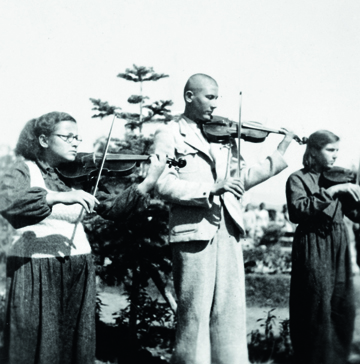 The mandolin and violin were favoured because they could be used to play both Western and traditional music
The mandolin and violin were favoured because they could be used to play both Western and traditional music
Students at all institutes were expected to “augment the national culture of the village populace”, offering programmes of folk music, dance and marching songs on national holidays, taking part in local markets, fairs and exhibitions, encouraging the use of the radio, supporting local museums, helping to restore local ruins and historic monuments, offering advice on hygiene, health, agriculture and forestation, protecting endangered species and, last but not least, providing positive role models for children of both sexes. Though the recruitment and retention of female students was difficult across the board, never rising above ten per cent, there were nevertheless small and isolated golden ages when girls at certain institutes were able to engage in skiing, riding, swimming, cycling and all the other sports and activities that were open to boys.
Each institute had its areas of special interest. While under the direction of Safa Güner, the Kastamonu Göl Village Institute ran “Saturday Gatherings” at which students were introduced to the cinema. By 1944 the Trabzon Beşikdüzü Institute had a 16-part orchestra and a 40-strong choir, and staged numerous plays. With the help of the expert instructor, Ismail Özkul, it even went into the fishing business, eventually acquiring two fishing boats and a dragnet, as well as building from scratch a motorboat (the Tonguç) in the institute workshop. In the early years of the decade, they also read classics, which they discussed with the director every afternoon between 5 and 6pm.
They had regular meetings with the administration, at which they were encouraged to offer constructive criticism. And each morning they took an oath, which they also wrote and put into a bottle to place in the foundations of each new building: “We are the children of those with calluses on their hands and sandals on their feet, who know how to dig deep into the soil with their nails. We are the children of those who laugh and scoff at empty words and dreams, and know how to carve mountains with their broken pickaxes.”
These were not empty words. Though most institute buildings were designed by architects, it was up to the institutes themselves to get them built. The Village Institute law required those living in their environs to contribute 20 days of their labour annually, but this requirement was resented and, to whatever degree possible, resisted. Students were sometimes called upon not just to help in the construction of their own school buildings but to travel considerable distances to aid in the construction of others.
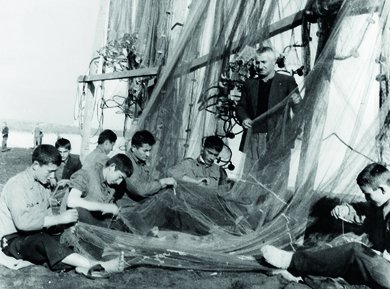 Fehmi Reis teaching his fishery students how to arrange nets
Fehmi Reis teaching his fishery students how to arrange nets
And so it was that the students of Kars Cılavuz Institute (which offered theoretical instruction and tailoring workshops during the long snowbound months, sending students outside in the spring to grow vegetables and work with their 11 horses, 44 cows, 6 oxen, 49 sheep, 10 geese, and many hundreds of their famous honeybees) would set off in the summers to help build new institutes in the provinces of Erzurum, Malatya and Ankara. After completing a new building, they would sign it like artists, writing the name of their own institute above the door.
One Saturday morning, Hamdi Akman, the director of Kızılçullu Institute, called all its 1,340 students to the front of the main building, whereupon he asked his 250 graduating students if they were willing to help in the construction of a new institute at Ortaklar before taking up their first teaching posts. “Yes, we are!” they cried in unison, their “conviction and passion” bringing tears to the director’s eyes. A few days later, 200 male and 45 female students set off for the railway station with blankets slung over their shoulders, singing marching songs all the way. Arriving at the blank slate that was Ortaklar, they spent the summer in tents, fighting off mosquitoes and putting up one building after another.
Then off they went to their assigned villages, to spread the word, and all too often to face extreme suspicion and hostility. A significant number of Village Institute graduates went on to write books inspired by their experiences, giving birth to a new strand of writing that came to be known as “village literature”. The best known is Mahmut Makal, whose memoir,Bizim Köy (published in 1950 and translated as A Village in Anatolia), is a testament not just to the abject poverty in which many Anatolian villagers were still living in the mid-20th century, but to the subversive power of his own education. He himself came from a similar sort of village, but now that he knew something of hygiene and science, agriculture and medicine, and now that he believed that secular schooling should be open to all, he had become an outsider, appalled by the villagers’ marriage customs and their continuing subservience to religious leaders, and furious to see them go hungry and die from the cold and treatable disease. His book caused a furore when it was published. The English translation of this and his later writings includes an account of two friends, like him graduates of İvriz Village Institute, who were appointed to nearby villages, only to be beaten and almost killed by villagers who believed them to be eyeing their unmarried daughters.
By now the era of the Village Institute was drawing to a close. Always resented by the religious right, and never fully endorsed by the more conservative wing of the Republican People’s Party, it was criticised, too, by leading figures of the left, who saw the Village Institute movement as an effort on the part of a single-party state to enlarge its sphere of influence, or more particularly to “Turkify” areas that were largely Laz, Circassian, Arab or Kurdish. You might also say that few on any part of the political spectrum warmed to the idea of a new class of villager that could think independently and talk back.
With the onset of the Cold War, the institutes became a target for anti-Communist hysteria. In 1946 a new Minister of Education with a new agenda dismissed Tonguç from the Directorate of Primary Education. It was in the same year that Emin Soysal, a deputy who was himself a former institute director, made his infamous speech in the National Assembly, in which he denounced the entire movement. By 1950, Tonguç had been put under disciplinary measures, with no reasons supplied. The attacks on his reputation continued. In 1953 he asked to be retired, and in 1954 the institutes were officially dissolved.
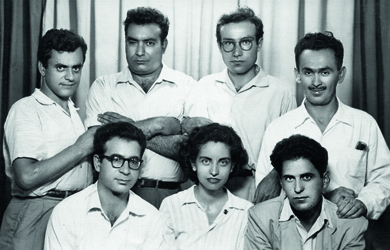 The Village Institute authors Mehmet Başaran, Mahmut Makal, Talip Apaydin and Fakir Baykurt with the novelist Yaşar Kemal
The Village Institute authors Mehmet Başaran, Mahmut Makal, Talip Apaydin and Fakir Baykurt with the novelist Yaşar Kemal
But their graduates did not forget what they were taught. They went on to have distinguished careers as teachers and leaders in education, novelists, poets and journalists. Many continued to work for justice and social change, inside the state’s institutions as well as the in trade union movement and civil society.
Their legacy has at last been honoured in an exhibition brought together by the Istanbul Research Institute and the Suna and İnan Kiraç Foundation. Its fine collection of photographs (many of them from the Tonguç archives) is supplemented by examples of student paintings, notebooks, brushes, pens, textiles and architectural drawings, and an impressive collection of Village Institute literature. The aim is not just to ensure that the work of the institutes is properly remembered, but also to draw attention to the New Generation Village Institute Association, which is now seeking to revive the movement.
For many the loss of the Village Institutes is a tragedy that cost Anatolia dearly. At the same time it is a testament to the transformative power of humane, progressive, egalitarian education. For if people are still lamenting the passing of the institutes, and arguing about their legacy, it must be proof that – however constrained – the ideals they put into practice are with us still.
Maureen Freely is a novelist and translator, and Professor of English and Comparative Literary Studies at Warwick University.
The exhibition ‘Düşünen Tohum, Konuşan Toprak: Cumhuriyet’in Köy Enstitütleri 1940–1954’ / ‘Mindful Seed, Speaking Soil: Village Institutes in the Republic 1940–54’ is at the Istanbul Research Institute, Beyoğlu, until October 27. The two-volume catalogue, in Turkish and English, is available from cornucopia.net, price £30
John Carswell pays tribute to his friend Honor Frost, doyenne of underwater archaeology
James Crow on Istanbul’s amazing system of aqueducts
The landmark 2012 exhibition at the Tokpapı Palace, and the sumptuous book that accompanied it.
The lethal mischief of Canon MacColl, by David Barchard
The Istanbul diaries of Gertrude Bell, now available online, reveal her astonishing transformation from socialite to scholar and political observer. By Robert Ousterhout
As Turkey and the Netherlands celebrate 400 years of diplomatic relations, Henk Boom highlights the twenty turbulent years that Frederik Gijsbert, Baron van Dedem spent as ambassador to Constantinople
Simple on the outside, some wooden village mosques had an added portico reminiscent of galleries opening onto the courtyards of private houses in the region. Inside, pillared halls and colourful painting on the wooden structure and on the walls make for a warm, joyful space. Photographs by Tarkan Kutlu
Abdülhamid I and Osman III’s private quarters in the Topkapı. Photographed by Fritz von der Schulenburg
Sagalassos, the remote site in southern Turkey where a giant statue of Emperor Hadrian was discovered five years ago, is the driving passion of Marc Waelkens. The Belgian archaeologist, whose new book is now available from Cornucopia, talks to Thomas Roueché about his pioneering work as director of excavations
The best table grapes in Istanbul are the fragrant, delicate skinned çavuş from the northern Aegean island of Bozcaada, ancient Tenedos, and the sweet sultaniye grapes from around Izmir.
Maggie Quigley-Pınar describes a book of photographs that evoke the spirit an almost-forgotten modern era: Istanbul in the 1970s
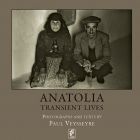
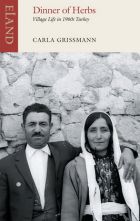
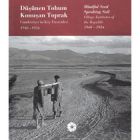
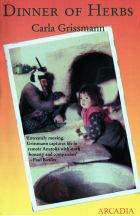
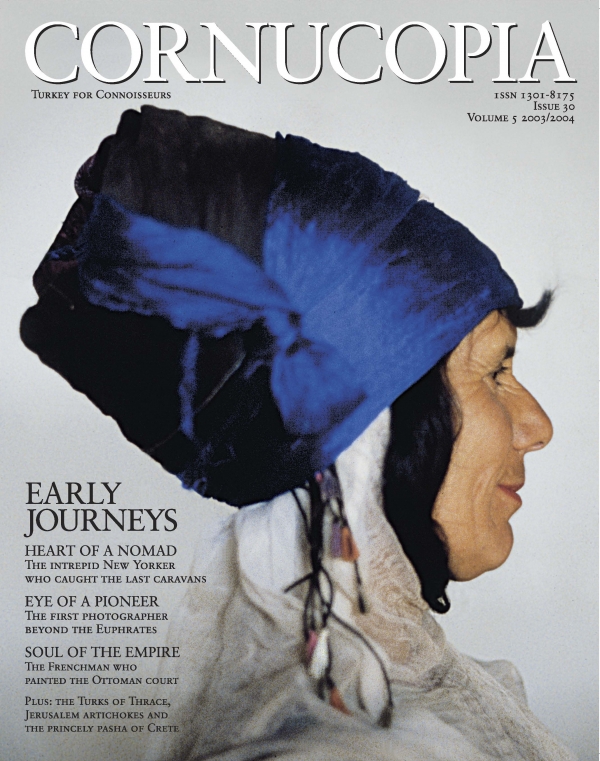
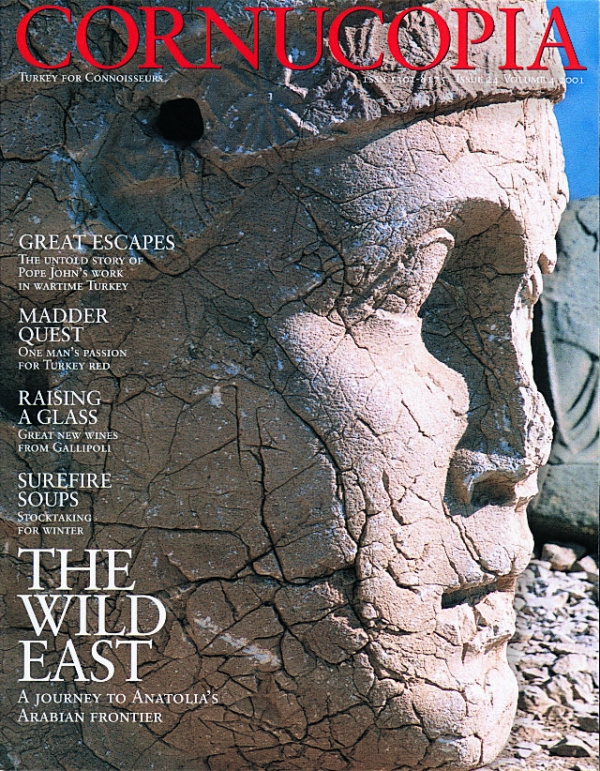

Cornucopia works in partnership with the digital publishing platform Exact Editions to offer individual and institutional subscribers unlimited access to a searchable archive of fascinating back issues and every newly published issue. The digital edition of Cornucopia is available cross-platform on web, iOS and Android and offers a comprehensive search function, allowing the title’s cultural content to be delved into at the touch of a button.
Digital Subscription: £18.99 / $18.99 (1 year)
Subscribe now